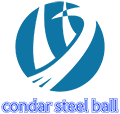Kangda has been making steel balls for more than ten years, and often encounters various problems and requirements of customers during the use process.
Among them, some manufacturers have put forward the conditions for the steel balls required for their high-end products: not only high hardness and wear resistance, but also high temperature resistance, corrosion resistance, no magnetism, no oil;
In view of the above conditions, we analyze and exclude one by one:
1. The bearing steel ball has high hardness and wear resistance, but its high temperature resistance performance is poor. It is not rust-proof by itself. It needs to add rust-proof oil or lubricating oil to keep it rustless, and it is magnetic and can be attracted by magnets;
2.300 series austenitic stainless steel balls have good rust resistance, corrosion resistance, and micro-magnetic properties, but their hardness is relatively low, about HRC26, and they are not wear-resistant;
3.400 series martensitic stainless steel balls have good rust resistance and high hardness, about HRC58, which has the advantages of austenitic stainless steel balls and bearing steel balls, but one thing is unavoidable, with magnetism, 400 Series of martensitic stainless steel, commonly known as stainless steel;
So is there a ball that combines the above advantages?
1. High hardness; 2. Corrosion resistance; 3. No magnetism; 4. High temperature resistance; 5. Low temperature resistance; 6. Self-lubricating; 7. Light weight and low density;
Is there a ball that has all these seven advantages? The answer is yes, and that is ceramic balls. According to different materials, ceramic balls are divided into silicon nitride balls, silicon carbide balls, zirconia balls, alumina balls, etc. Of course, the characteristics of these types of balls are also different depending on the material.
Post time: Jan-12-2022
